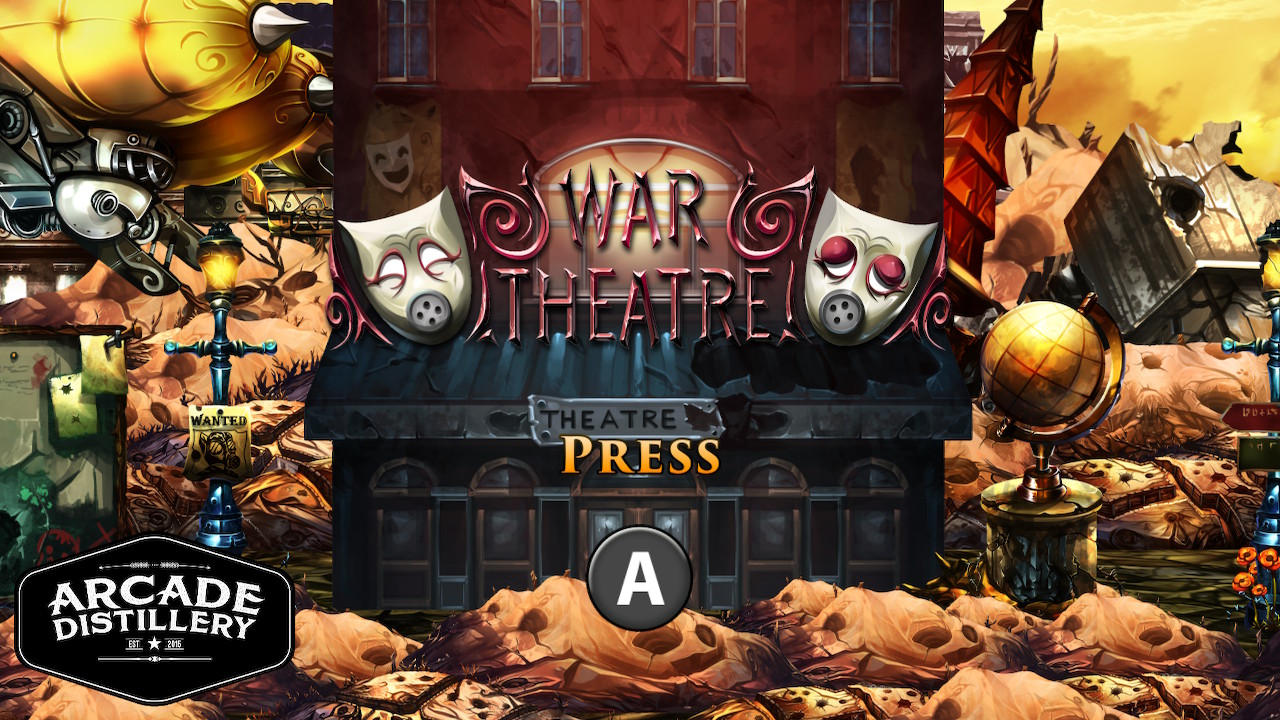[Review] War Theatre – Nintendo Switch
War Theatre
Nintendo Switch
Developed By: Arcade
Distillery
Published By: Arcade Distillery
Category: Strategy, Multiplayer,
Role-Playing
Release Date: 04.04.19
When War Theatre for the Nintendo Switch came across the site’s review queue, I was interested based solely on the fact that they spelled “theatre” the British way. I thought to myself “Self, this must be one classy game!” And this even happened before I found out how heavily inspired it is by one of my all-time favorite series that I desperately need Nintendo to bring back, Advance Wars. So, basically, what we have here is a game whose concept is tailor-made to appeal to some of my most specific interests. The finished product has some issues, but overall it’s a slick, attractive turn-based strategy game.
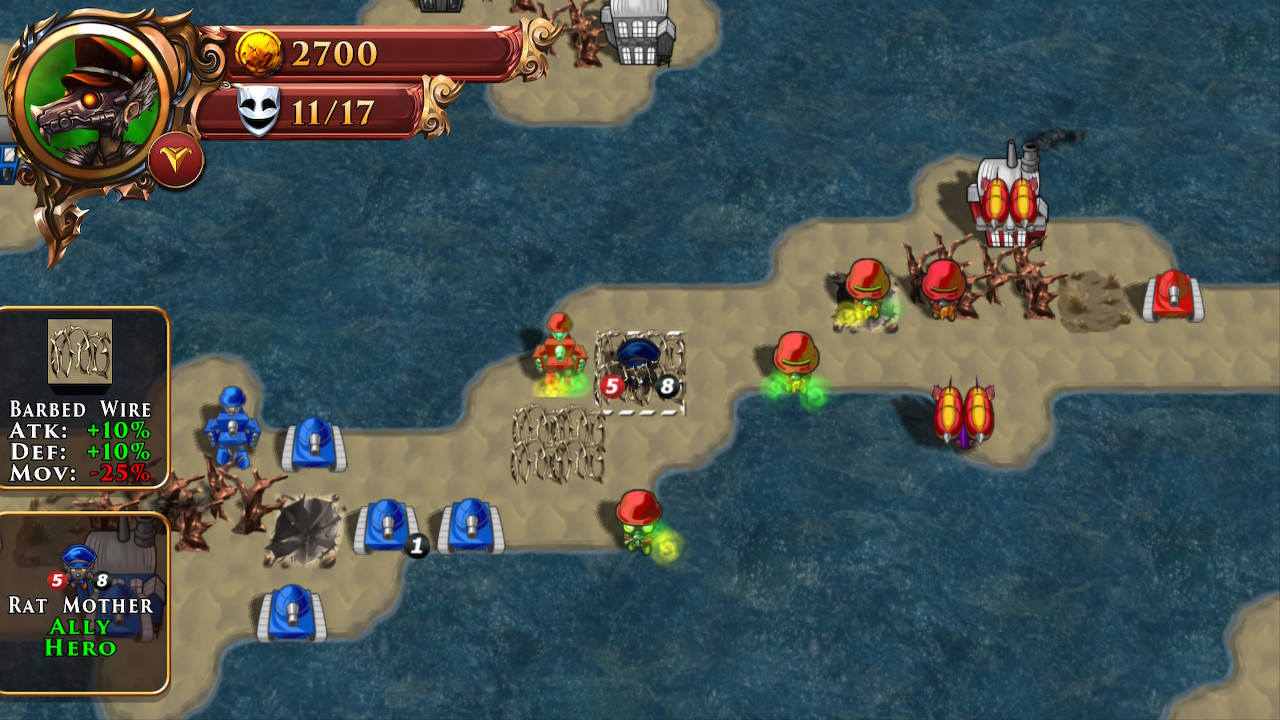
In the Grim Darkness of the Future, There is Only War Theatre
So the game is pretty straightforward, which is good, because I’ve been through every menu, first campaign mission, and skirmish mode, and I can’t find a single tutorial. It’s your typical square grid, turn-based strategy game. You move your units around the map, and each unit has an attack range of so many grid squares. Pretty typical stuff for the genre. You can build new units at factories scattered throughout the map, and you pay for them with money you get from cities also scattered throughout the map. In order to use a structure, however, you’ve got capture it first. Only infantry units can capture buildings, so even though they aren’t that great in combat, you need to make sure you’ve got some infantry units around.
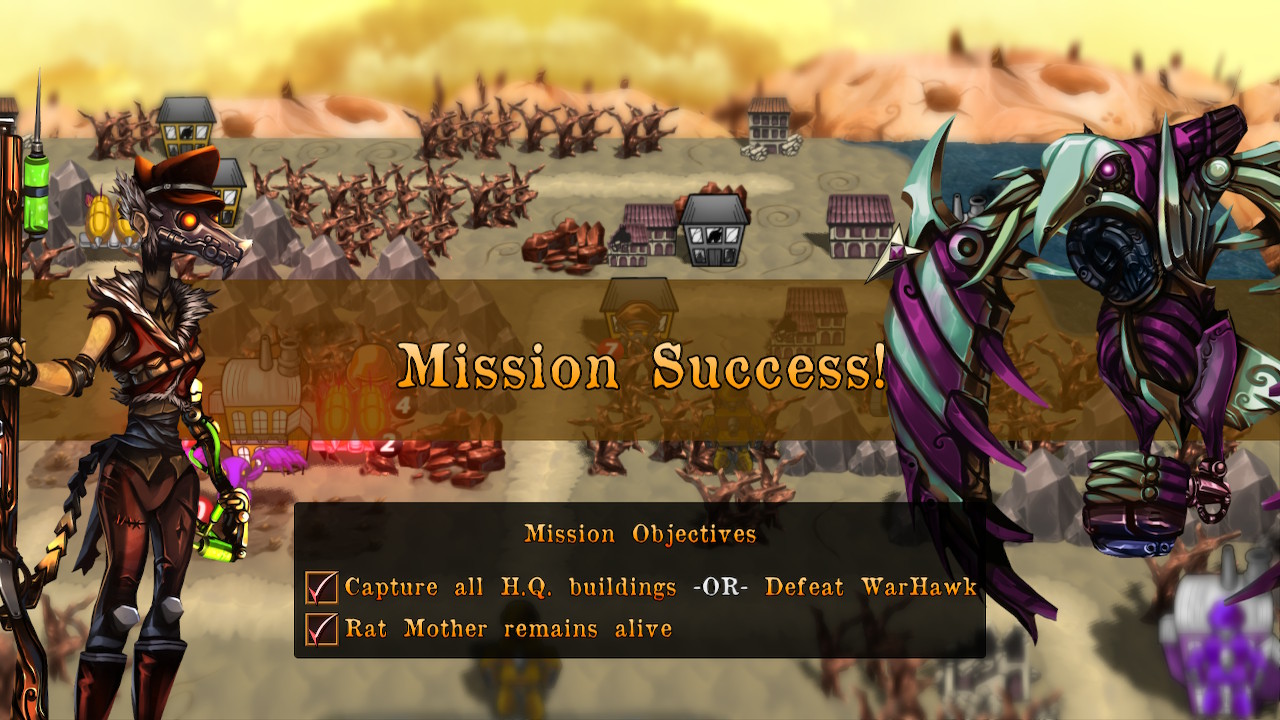
Rock, Paper, Scissors, Mech, Submarine, Blimp
Speaking of units, there are four different types of units to recruit, each with their own strengths and weaknesses. Infantry units are weak against almost everything, but they are strong against air units and, like I said, they are the only units that can capture structures. Heavy units like Tanks and Mechs are strong against infantry and weak against air units, but generally they have high attack and defense so “weak” is kind of a relative term. Air units are strong against heavy and sea units, but weak against infantry. Sea units are strong against ground units, but weak against air units. This cycle makes for some interesting strategic decisions regarding how to build an army. In addition to the constraints of what you can afford (money runs out pretty quick), building a balanced force that can counter your enemy’s attacks changes almost every turn.
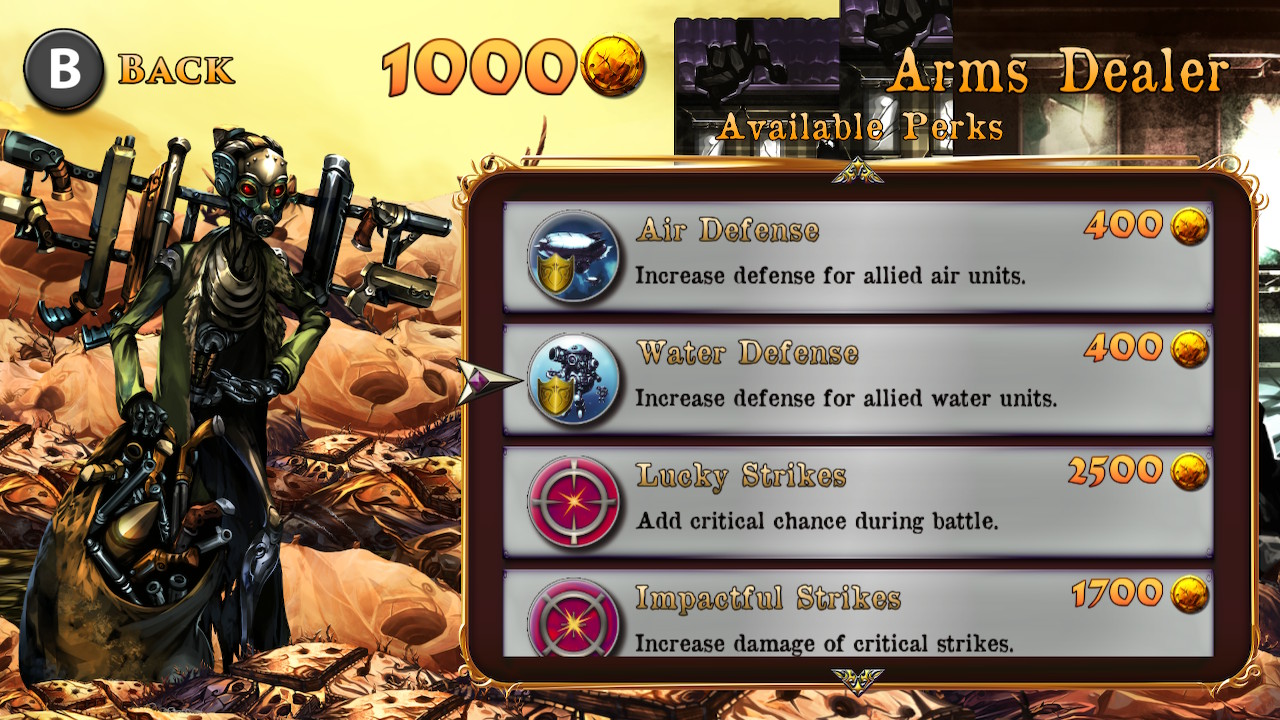
Large and In Charge
If you remember Advance Wars, you remember that you have a general that allows you to use certain abilities to enhance your units. They didn’t appear on the battlefield at all. However, in War Theatre generals have to put their money where their mouth is and take the field. These special units have insanely high attack and defense, and they aren’t really weak to anything except large numbers of attackers. Additionally, they have two special abilities that can be activated by burning ability points. These points generate at a rate of one per turn, and the point cost is related to the power of the skill. For example, the general unit Rat Mother has a two-point ability to set a small area of smog on the battlefield, which slows enemies who walk through it. Her four point ability, however, allows her to poison enemies within a large radius of her unit marker, dealing damage over time. Generals are a powerful tool in your strategic planning, but it’s generally a good idea to keep them away from trouble so you’re sure you have them when you need them.
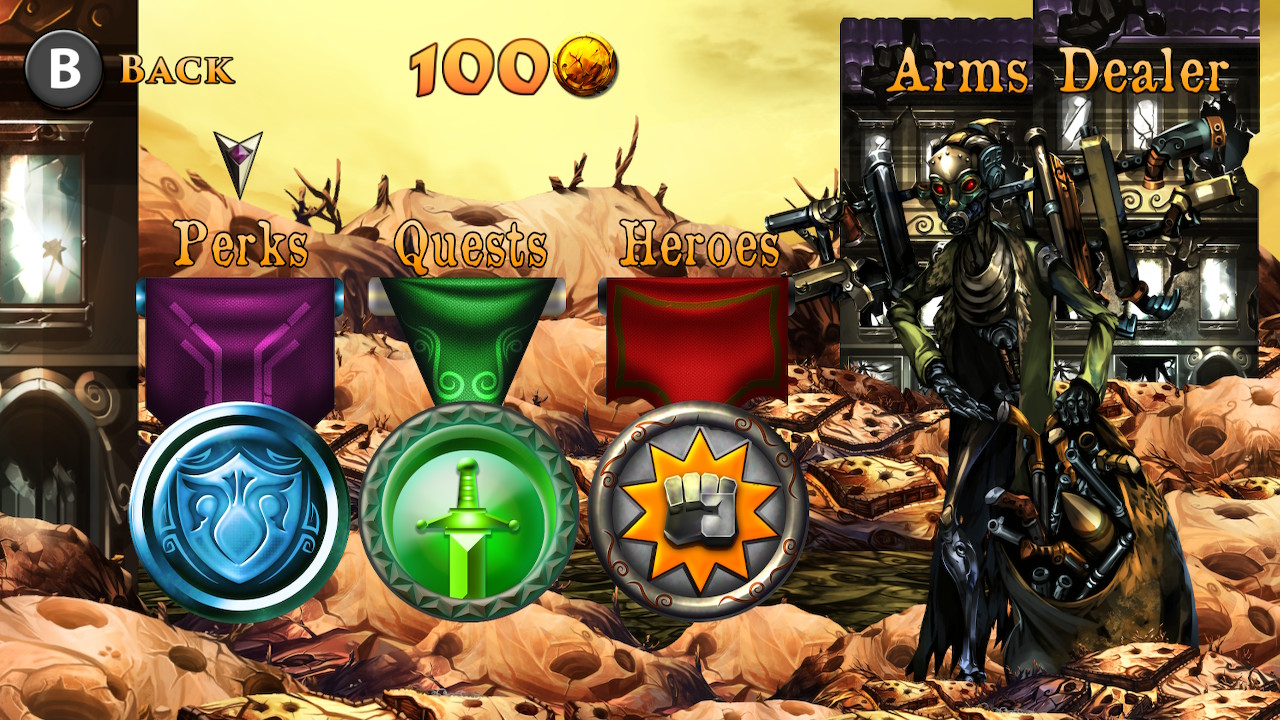
The Generals’ Store
Accessible from the main menu, players can receive quests and buy perks from the Arms Dealer. You can choose quests like destroying a certain number of a certain type of enemy or capturing a target number of cities. Upon completing a quest, which can be done across multiple maps or battles, the Arms Dealer rewards you with gold. You can use that money to unlock heroes to be used in Skirmish or Multiplayer mode. One hero is free to use each day, so you can still play those modes if you haven’t built up enough gold to unlock a hero yet. You can also purchase perks which you can use to power yourself up during missions. You can increase your units’ attack and defense, as well as unlocking the ability to heal your units in cities or on certain terrain types. Perks are essential to beating the game’s harder missions; I found certain boss missions to be basically impossible without their boosts – but we’ll get to that.
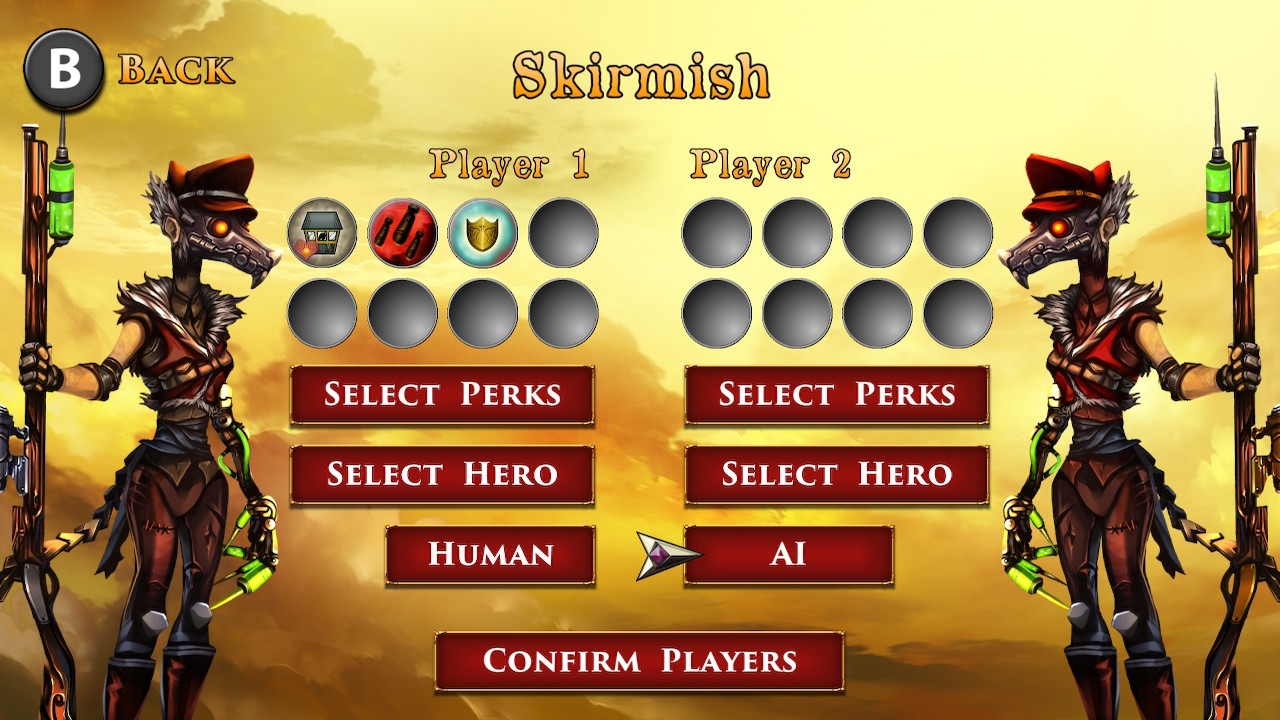
Theatres of War
There are three modes to actually play in War Theatre; Skirmish, Multiplayer, and Campaign. Skirmishes are just one-off fights; you pick a map, a general, and your perks, and you get to fighting. This is a good way to farm quests to get perks – Skirmish battles are quick and relatively easy since you get to pick your opponent’s general and perks in addition to your own. Plus, the more perks you have, the quicker and easier they get; you can power yourself up while leaving the baddies in the dust. Multiplayer is basically Skirmish mode, except you play against another human online instead of against the computer. There is local multiplayer as well, which is actually part of Skirmish mode. You can just set the opponent to human rather than AI. It’s actually an even cheaper way to farm quests to set both generals to human, and just skip fighting altogether. You just build the units you need to destroy or trade cities to conquer. It’s a little more boring than actually playing the game, but that’s the price you pay for expediency, I guess.
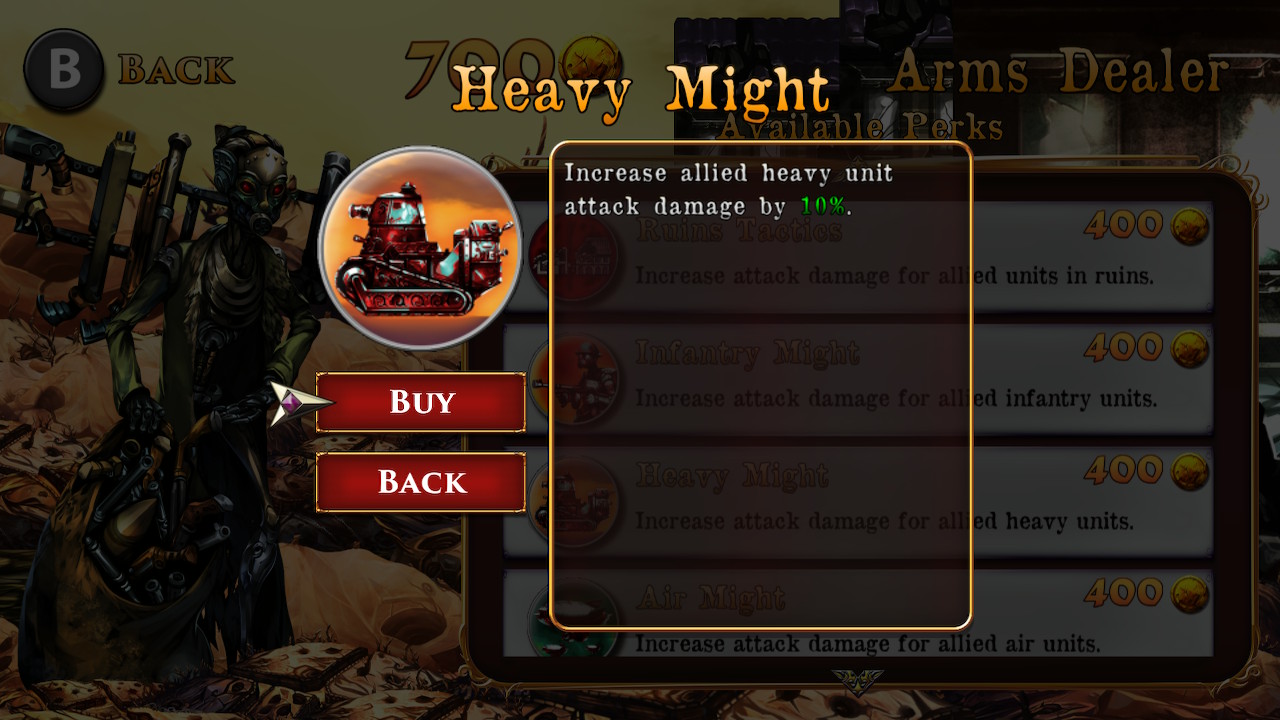
Imbalance of Power
The final mode, Campaign, is by far the most complex. There are as many campaigns as there are generals, which sounds cool at first. Seven different campaigns is a lot! Did I mention there were seven heroes? I feel like I missed that earlier. Sorry. Anyway, seven campaigns! A cornucopia of campaigns! Except not really; the stories all boil down to kind of the same thing. They’re all going after one mega-weapon, which is fine; it’s a post-apocalyptic warzone. Everyone wants guns. No, the real issue with the campaigns is that the game just doesn’t balance its difficulty that much.
Missions are either too easy or almost impossibly hard, even with perks assigned. Map layouts tend to be fairly balanced; there are an even number of cities and factories roughly evenly spaced between the starting points of both your army and your opponent’s. But, once you get to the end of the campaign, that balance disappears. There are one or two more cities or factories nearer the enemy than you, and it is almost impossible not to get swarmed under by sheer numbers in that scenario. Perks help – in fact they more than help; they’re basically essential to succeed under those conditions. That is not the definition of a perk – a perk is optional; a bonus. Once you add in the fact that the final boss has a ridiculously long range and the most insane attack and defense stats in the game, the final campaign missions are just super-frustrating. So, basically, missions are either too easy to figure out or so frustrating it doesn’t even feel worth trying. And that’s a huge shame, because the game system underneath that is solid and well-designed. I just wish the balance was less extreme.
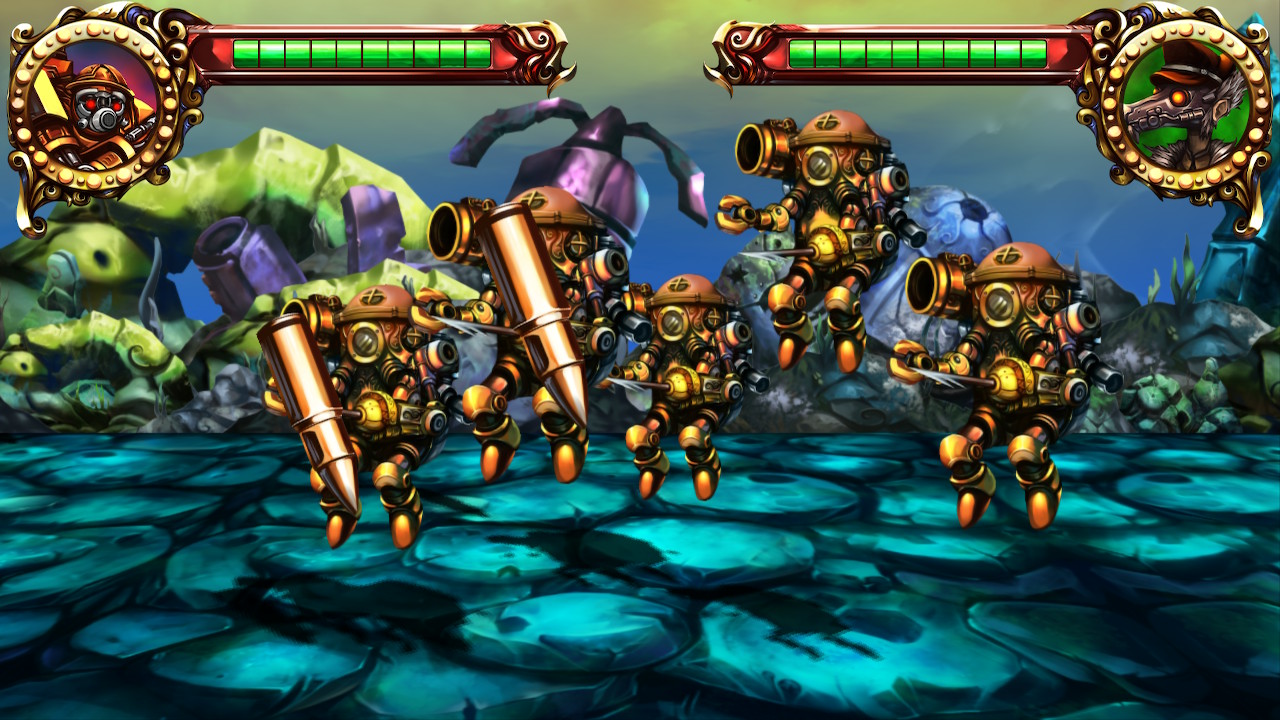
That’s a Lot of Gas Masks
War Theatre’s visual design is one of its stronger elements. While every army has the same units except for the general, the game’s fusion of steampunk and post-apocalyptic elements is unique and attractive. Character battle animations are smooth but somewhat stilted, giving the impression of marionettes on strings with their movements. That plays somewhat into the theatre concept, but the game is fairly light on lore, so it’s a fairly loose motif. The wonderful art direction carries over into the audio department. While the game doesn’t have any voice-acting, the music is outstanding. The soundtrack consists of stern, dramatic orchestral arrangements that convey the desperation of the game’s world better than the story itself does.
Playability
War Theatre does not make use of the Switch’s motion controls, but it does use the touch controls. The touch controls are a little awkward to use in the menus, as you can’t swipe to move the menus from left to right, which given the menu layout would seem like a natural option. However, once you get into the fighting, I actually found the touch controls more comfortable to use than a controller! Scrolling around the map was easier, selecting units was easier, and choosing actions was easier using touch controls than using either the Joycon or the Pro controller. The graphics look great on both my TV and the Switch’s screen, so I recommend War Theatre for play undocked based on the improved ease of use provided by the touch controls.
TL;DR: Very well-designed art, music, and game system elements are held back by poorly-balanced campaign difficulty.






